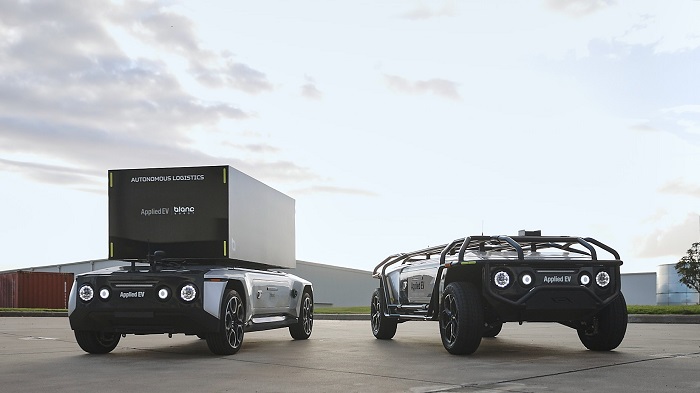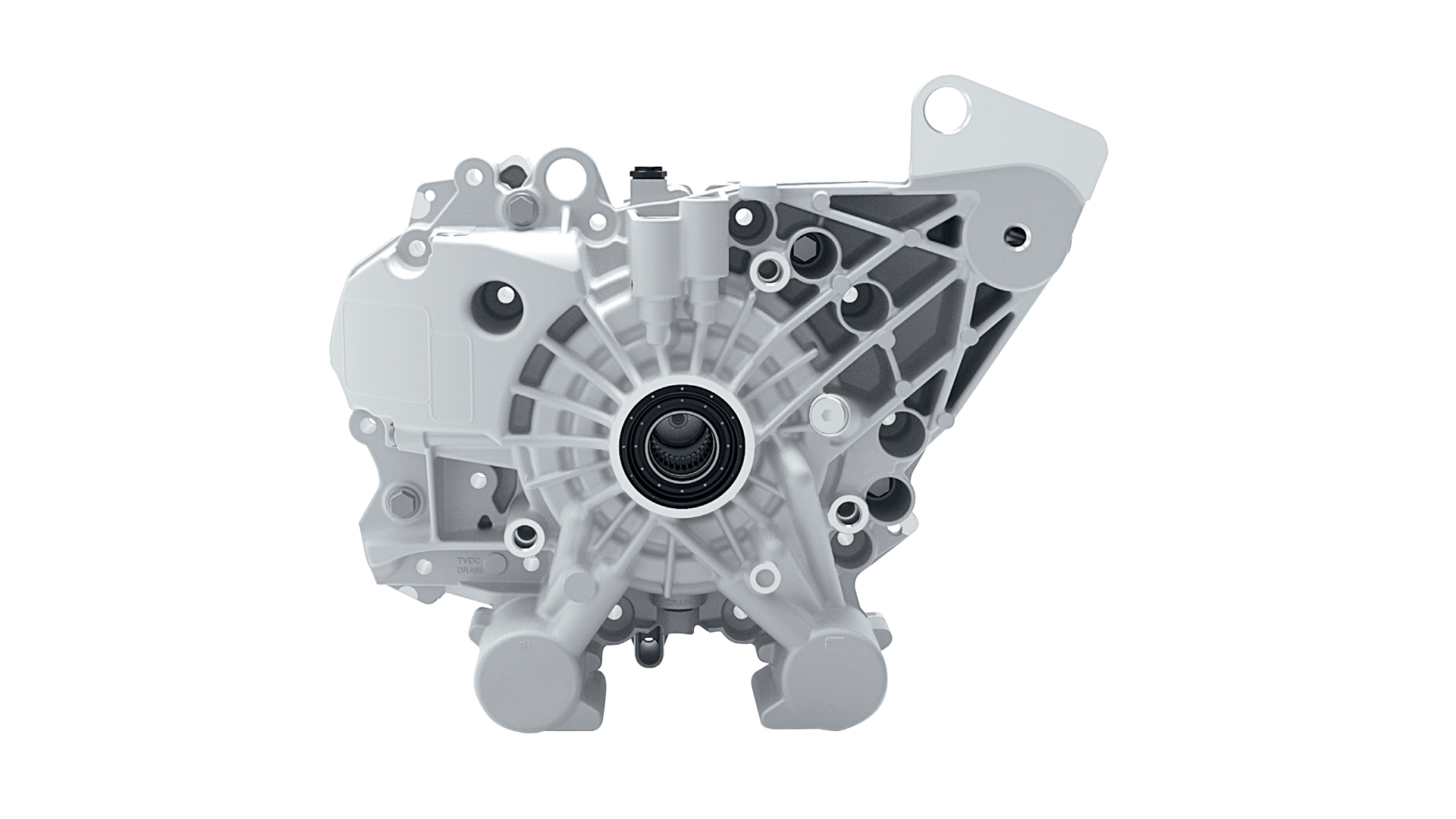Mechanical and electronic engineering continues to play a significant role in the changing transportation landscape. Areas such as connected vehicles, autonomous driving, new components and software-designed modules will push the latest EV technologies for the next ten to 15 years. Mechatronics will play a pivotal role in these advancements.
ZF Advanced Motion Control System
As commercial vehicles become more automated, electrified and connected, vehicle motion control technologies are becoming increasingly important in managing ever more complex vehicle systems. Additionally, the discussions about the software-defined-truck and the related E/E architecture require new approaches to ensure modular and high performing vehicle motion control systems.
ZF’s advanced motion control system, cubiX, is designed for precisely this purpose. ZF’s cubiX portfolio, originally developed and successfully in series production for the passenger car sector, is now expanded and available for commercial vehicles to create one holistic ZF offering for advanced vehicle motion control.
As with passenger cars, electronic control functionalities are also increasing in commercial vehicles, leading to a growing demand for dedicated control units. With the emergence of new electrical and electronic vehicle technologies, all vehicle actuators including brakes, driveline and steering can be managed cohesively through centralized control software.
This is where cubiX comes into play: the ZF-software controls all actuators to ensure vehicle stability, safety, precision and performance. The system is now also available for commercial vehicle customers, customized to their individual needs and includes software, hardware as well as system integration and system engineering services.
“It was obvious for us to expand our software platform portfolio for Vehicle Motion Control to meet the needs of commercial vehicles,” explains Dr. Holger Klein, CEO of the ZF Group. “It has always been one of ZF's strengths and competitive advantages to adapt innovative technologies that we initially developed for one mobility application to several segments.”
CubiX interfaces with all virtual driver systems and the vehicle actuators to ensure required safety, precision and vehicle performance in challenging driving scenarios such as freight yards or ports, where there is more scope to deploy automated technologies compared to public roads. Thus, cubiX for commercial vehicles is an enabling technology for higher level automation.
Automating vehicle movements in freight yards and ports can greatly increase efficiency and productivity, while addressing key issues impacting the logistics industry such as ongoing driver shortages, especially for night-time operations.
That is why ZF’s cubiX makes it simpler for vehicle manufacturers and end-users. Virtual driver system suppliers and OEMs can focus on their core competencies, taking care of perception and planning as well as the vehicle itself. ZF is ensuring ‘ready-to-automate’ vehicle motion control thanks to its X-by-wire product portfolio.
The software has been tested in the field under real-life conditions and has already proved to be highly effective in a recent long-term pilot study in Germany, where cubiX was successfully deployed in a freight yard.
Applied EV Taps CISSOID’s Inverter Control Modules for E-motors
Applied EV has selected CISSOID's new CXT-ICM3SA series of Silicon Carbide Inverter Control Modules (ICMs) to drive their latest generation of autonomous vehicle E-motors.
Dedicated to the E-mobility market, CISSOID’s software-powered SiC ICMs are augmented with onboard programmable hardware, accelerating the response time to critical events, off-loading the processor cores and enhancing functional safety.

The ICM is integrated into Applied EV’s Digital Backbone, a centralized control system combining state-of-the-art software and hardware, setting a new benchmark for safety rated vehicles.
Applied EV’s CEO, Julian Broadbent, said “Both Applied EV and CISSOID recognize functional safety is critical in the development and deployment of autonomous vehicles. The partnership integrates CISSOID’s ICMs into our Digital Backbone, allowing for a faster development cycle, giving our customer the safest vehicle in the shortest time possible.”
CISSOID’s CEO, Dave Hutton, said: "We are excited to embark on this collaborative journey with Applied EV to drive innovation in e-mobility. By combining our expertise in electric motor design with Applied EV’s proficiency in software and vehicle integration, the aim is to deliver a game-changing electric motor drive platform for the future of mobility together."
The collaboration underscores the shared commitment to driving positive change in the automotive industry and contributing to a more sustainable future for transportation globally.
BorgWarner Provides Electric Torque Management System for BEVs
BorgWarner’s Torque Vectoring and Disconnect (eTVD) system for battery electric vehicles (BEVs) recently launched for Polestar and an additional major European OEM. The eTVD is part of BorgWarner’s electric torque management system (eTMS) solutions portfolio, which is designed to intelligently control wheel torque to increase stability, provide superior dynamic performance, and improve traction during launch and acceleration. The eTVD is currently in production on the Polestar 3 SUV, and production for the major European OEM will follow later this year.
“Our new electric vehicle torque management systems showcase our multidisciplinary expertise, system integration capabilities, and the exceptional work of our BorgWarner team,” said Volker Weng, vice president of BorgWarner Inc. and president and general manager, BorgWarner Drivetrain and Battery Systems. “With the market transitioning to more software-defined modules and vehicles, it is critical to have sophisticated systems in place, like our eTVD, that can precisely and quickly calculate, predict and control vehicle behavior across a wide range of situations. We have received exceptionally positive feedback from customers regarding their test drive experiences and look forward to addressing further market needs with our software, controls, and calibration expertise.”

The high performing eTVD offers a 3-in-1 system, replacing the differential and featuring both torque vectoring and an on-demand disconnect function. In contrast to brake-based systems, torque vectoring prevents unnecessary brake interventions, therefore reducing harshness and vibration. This also leads to less wear and tear on brakes and tires, with the added benefit of lower particle emissions.
BorgWarner’s eTVD systems offer high-level software and controls that can be customized by OEMs to align with their own platform needs and specific brand characteristics.
The higher weight of BEVs can reduce agility, but BorgWarner’s eTVD systems enable a much lighter feel of the vehicle while increasing overall safety. Smart design and intuitive software minimize the risk of undesired driving characteristics and enables superior traction regardless of road and weather conditions. Torque response is instantaneous in challenging and demanding scenarios, ensuring smooth, safe rides.






